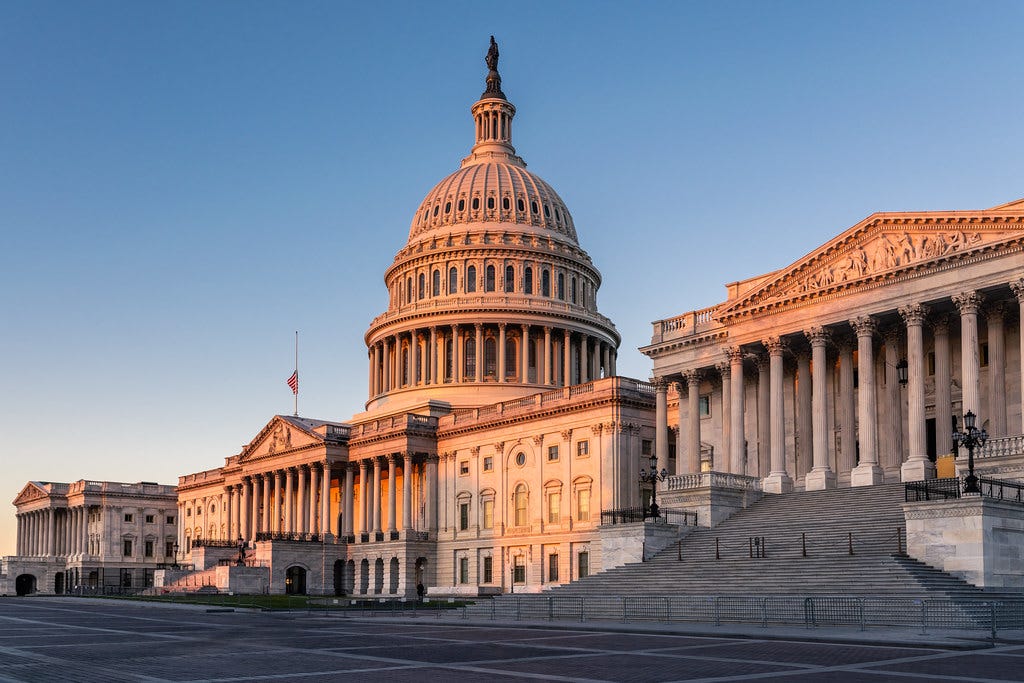Federal technology use often lags behind the commercial sector, but the AI revolution may be the exception to the rule. Trade publications are awash with news, including this week's story about the potential Department of Energy's permitting process use case and the Food and Drug Administration clearing its 1,000th clinical AI algorithm (107 alone this year). I attended GovExec's A.I. in the Civilian Agencies yesterday to discover more use cases.
The two government speakers were Hugh Nathanial Halpern, Director, Government Publishing Office (GPO) and Gharun Lacy, Deputy Assistant Secretary and Assistant Director of the Diplomatic Security Service for Cyber & Technology Security, Department of State. Sponsored by CDWG, Dell, and NVIDIA, the event discussed several themes revolving around AI use cases, with a strong focus on cybersecurity.
Here are my top five distilled use cases based on the conversations:
1) Workforce Multiplier—In the commercial sector, a common theme is ensuring job integrity while adopting AI. In federal, agencies cannot find enough talent to do the job. From security clearances to lower wages, recruiting talented labor to serve their country is more complicated than one would think. The GPO needs many talents, from traditional publishing artisans to developers, and sees AI as a possible means to scale its workforce to meet demand.
GPO is not alone. State also saw AI as a means to address workloads it simply does not have enough talent to address, and hasten training cycles to upskill team members. In addition, state uses automation to scale its workforce (Lacy was careful to note automations are not AI) and perform tasks like auto-tagging phishing emails and reporting them to the Cybersecurity and Infrastructure Security Agency (CISA).
2) Document Analysis—Reading long PDFs filled with policies, bills, RFPs, budgets, and every other imaginable kind of federal document can be quite tedious. Now imagine proofing them for Congress or another purpose, scanning for PII and errors. GPO sees proofreading as a means to help its staff better process the heavy workflow of documents it is responsible for protecting. One government contractor noted they were using AI to summarize the Defense Department's 2025 budget.
3) Summarization—All the speakers brought up summarization as a means to accelerate work. Again, using the same documents in the aforementioned analysis use case, documents can be queried, and summaries can be produced to help federal employees better access information. State is using it to help new foreign service officers quickly catch up on their predecessors' actions, saving months of re-establishing diplomatic initiatives.
However, because of hallucination issues challenges can occur. As a result, GPO is moving slower with document summarization, particularly when it comes to its two publications, the Congressional Record and the Federal Register. Protecting the reader experience and document integrity are its top concerns.
4) Cybersecurity—Cybersecurity was noted throughout the event. I was reticent to include it because, from an ML perspective, detecting security anomalies and threats is an older use case that predates the generative AI boom. Most cybersecurity platforms use it to protect data assets such as personally identifiable information and systems, which is an established use case. However, securing public data, national infrastructure, and defending the country all deal with cybersecurity, so it is an ongoing and essential part of IT systems, and by default, AI.
5) Coding—Like large corporations, federal agencies share a need to code to support their systems. Using AI to help generate and facilitate coding can achieve results faster and scale the workforce. State Department openly discussed using generative AI as a coding accelerant, citing the need to use DevOpps to ensure quality and safe new software deployments. GPO also alluded to the need to use AI to assist developers.
Perhaps the most prescient statement was made by Ryan Simpson, Senior Solutions Architect at NVIDIA, in his closing remarks. He noted that technology has capabilities far beyond current applications and that we are only limited by what we as humans conceive as potential applications.
Federal agencies and their various bureaus have so many diverse missions. We have only begun to scratch the surface of potential use cases for civilian agencies in their efforts to serve the public.
What do you think about federal uses of AI to serve the general public?





